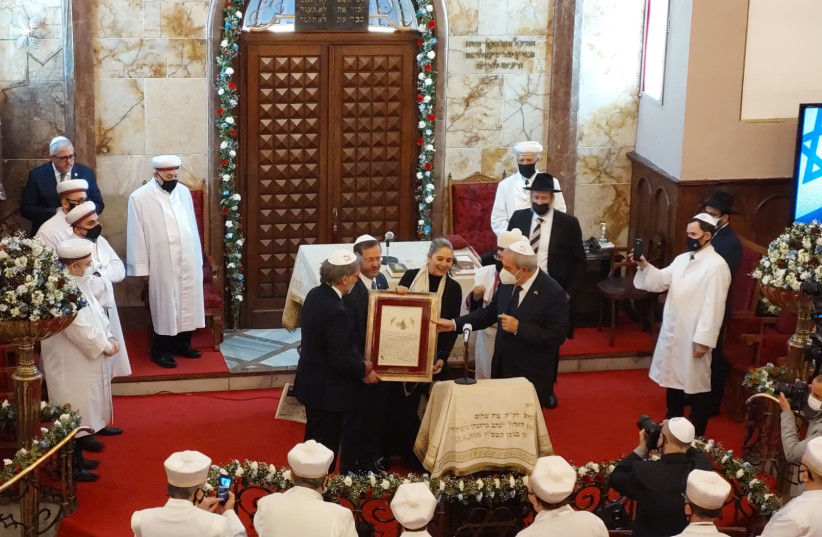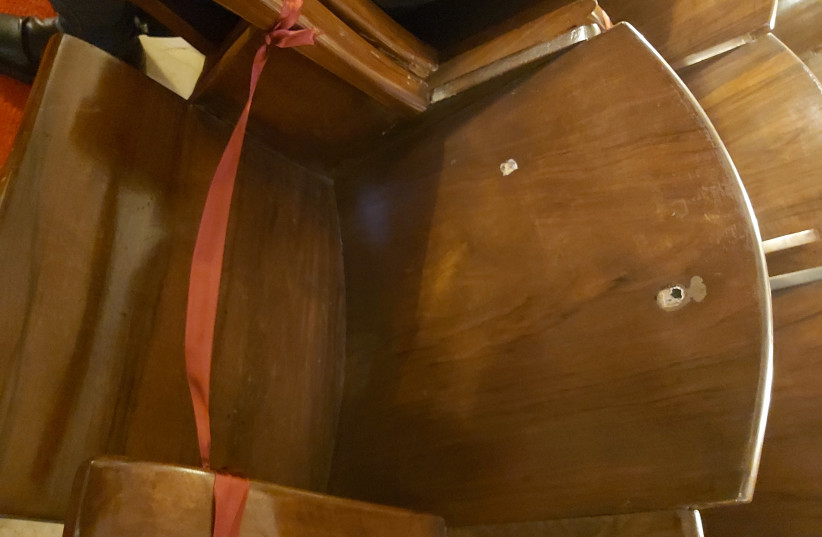ISTANBUL – Besides being a fascinating place to tour, visiting Istanbul a month after President Isaac Herzog started the reset of Israeli-Turkish relations with his visit to Ankara last month can be a bit disorienting.
The amount of hopes, contradictions, dreams and failed promises in relations between the countries over the past decades are matched by the paradoxes of Jews in Turkey and the mishmash of Turkish history itself.
Our Israeli journalist delegation started with a meeting with A. Burak Daglioglu of the Investment Office within Turkey’s broader Presidential Office.
Daglioglu and his staff skillfully steered clear of our hot political and diplomatic curveballs with the message that Israelis could count on Turkey to protect any investments they make in the country regardless of past and potential future foreign-policy disagreements between the governments.
When looking at the billions of dollars in business that continued between Israelis and Turks even when the countries did not have ambassadors in place, he may be right.

Daglioglu also did not get into the major economic issue hovering over Israeli-Turkish relations: whether a joint gas pipeline project is economically feasible, and whether Israel might consider backing out of a deal it cut along similar lines with Cyprus, Greece and Italy. His job is to bring foreign investment into Turkey.
The group also took a boat tour of the Bosphorus, which splits the European and Asian continents, a quick sign of Turkey’s milieu of Middle Eastern, European and many other cultures mixed into one.
Landing eventually on the European continent side of Istanbul, we visited the Neve Shalom Synagogue and Museum.
The synagogue and Jewish community have been hit by three terrorist attacks since 1986, the most recent two taking place on November 15, 2003, which killed 24 people and injured more than 300. The synagogue has a nondescript façade, reducing its “Jewish-looking” footprint for would-be attackers.
In fact, even the 2003 attack did not kill worshipers inside the synagogue or damage the prayer area itself, despite creating a crater three meters in diameter. After the 1986 terrorist attack, the Jewish community took extreme measures so that the prayer area would be significantly separated from the street front.
When visiting the beautiful, classic and ethnically unique prayer area deep inside the compound, we were able to see a seat that still had two bullet holes from that attack.

After retelling the story of all of these terrorist attacks, Museum of Turkish Jews director Nisya Isman Allovi told the group of journalists that more than 90% of Turkish Jewry left many decades ago, but the 15,000 remaining Turkish Jews still stood proud and remained active.
There are 18 synagogues in Istanbul, with seven or eight conducting weekly Shabbat morning services, she said, and on the High Holy Days, the Neve Shalom Synagogue’s 550 seats are filled to capacity.
There are a variety of unusual Turkish-Jewish customs of which the community remained proud, Allovi said, including its version of the bat mitzvah ceremony: a group ceremony of girls dressed in white, each led into the synagogue by their father, who then perform specific group prayers for the community.
One can always be skeptical about what people in countries without a free domestic press really think, but in quiet conversations away from any accompanying Turkish officials, Allovi made it clear that the Turkish government protects the small Jewish community, and security concerns are from radical jihadists.
Another major point of the tour was the Hagia Sophia building, which started as a church in 537 and remained so until 1453 when it was converted into a mosque. It remained so until 1935 when it was converted by Ataturk into a museum, and then re-converted into a mosque in 2020 by Turkish President Recep Tayyip Erdogan.
The building itself is mostly a mosque, but it still has some leftover mosaics connecting it with a variety of Christian themes.
If this seems like a dizzying number of changes and mixing of cultures, add in a number of nearby monuments invoking the area’s older past as part of the Greek-Hellenistic empire and culture.
There is even a nearby prison that has recently been converted into a top hotel.
All of this only touches the surface of the numerous interesting and contrary historical, religious-secular, East-West, Israeli-Turkish, and Turkish-Jewish trends flowing through Istanbul.
